Introduction
Security management involves actions taken in order to protect facilities such as assets, buildings, and property from unauthorized access, damages, theft, and other risks. The provision of physical security to a facility looks at three areas. These include providing security upgrades to outer areas, inner sections, and interior parts of a facility. These combinations provide the best form of physical security system to a facility.
The main aim of securing a facility is to protect it from theft, malicious damages, and other risks arising from intrusions. Physical security of a facility is the basic approach to ensuring that assets and other valuable data remain safe in the facility. The security management system must detect, deter, observe, as well as report any potential intrusion.
The system should aim to prevent, provide surveillance measures, and ways of dealing with possible intrusions. Thus, upgrading the security system of a facility is an important undertaking that an organization must implement to ensure that unwanted security threats do not occur.
This easy focus on the security management system of a facility by highlighting necessary upgrades needed by considering the vulnerability of the facility. The essay addresses total security system design including barriers, site hardening, access control, lighting, Intrusion Detection Systems, CCTV, and patrols among others.
Security System Upgrades
The first security system upgrade should focus on barriers placed on the facility lines. This is mainly to control the movement of people and vehicles. This process involves understanding risks by evaluating the available physical security and possible consequences in case of intrusion. Most security measures focus on natural access control and territorial reinforcement.
Intruders think that they have the maximum control of facilities they can easily enter and leave without restrictions. In this regard, intruders perceive such facilities as bearing low risks. However, simple barriers and signage may indicate that the facility has marked areas of gaining access to it.
Barriers
Barriers act as territorial reinforcement to a facility. They can restrict outsiders and intruders. Barriers are the best approaches to distinguishing a facility. Fences and hedges act as barriers to intruders. Such barriers should be difficult to climb. Thus, short fences or hedges are not suitable for providing effective security. At the same time, such barriers should not act as hideouts for intruders.
Signage should warn potential intruders of the consequences of unauthorized entry into the facility. However, barriers are not effective in controlling movement in or out of the facility. Instead, they warn intruders that the place is under control and unwanted entry is an act of criminal activity.
Site hardening
Site hardening is a means of improving the abilities of a facility to withstand external intrusions. This happened after the 9/11 attacks when organizations realized the need to protect their facilities, employees, infrastructure, and equipment. This approach mainly focuses on corporate protection among organizations. This is what Verizon has initiated across its offices. The site hardening approach has a wide scope.
- Controlling basement, ingress, and egress access using card readers
- Monitoring all doors
- Securing all windows
- Improving both interior and exterior CCTV surveillance
In some cases, site hardening may also involve building low-story buildings in order to reduce the impacts of blasts or attacks from vehicles. It also ensures securing of the facility with controlled access whereby only authorized persons can gain access to the facility. Site hardening also includes the following measures.
- Providing barriers
- Controlling all sites of gaining access to the facility
- Controlling traffic and car parking within the facility
- Monitoring site areas where most activities take place
Site hardening may also rely on technology in order to provide effective surveillance using strategies, which make systems tamperproof such as locks and tamper switches. It may also use methods, which make operating any device a difficult task. This method may include power line filters and EMR shielding (Sourcefire, 2012).
Tripwires have been effective in improving site hardening for extra surveillance. It identifies common points of gaining access to facilities. Experts in security provisions note that such points of gaining access to facilities are “better with nothing more than a tamperproof coating on the screws that secure them” (Sourcefire, 2012). There are also anti-tampering systems, which are readily available, such as removable strength thread locks. However, there are systems that can make this technology useless because they create similar sealants to use on tripwire devices. The additional ultraviolet-sensitive powder can easily indicate cases of tampering with the facility lock.
Access control
Access control provides the ability to limit entry within the facility. This is one strategy of protecting the facility, employees, and business against cases of potential harm, intrusions, damages, theft, and other risks. Access control applies to all places of gaining access to the facility.
Any form of physical access may only happen by using a pass. Security officers or turnstiles are responsible for enforcing access control. Usually, there are barriers to prevent intruders from circumventing the facility.
In some cases, facilities require physical access control. This system checks and allows only authorized persons to gain access to the facility. Restrictions involving physical access control can take many forms. These may include:
- Locks and keys
- Guards, bouncers, or receptionists
- Technology such as mantrap
Access control may also use physical key management to monitor movement to certain areas.
Physical access control facilities rely on whom, where, and when. For instance, the system can control access to a facility based on an individual, time, and point of entry. This may apply to exits too. People widely used “keys and locks as forms of access control” (Deutsch, 2012). Thus, people who had keys were the only ones who could open locks to gain access. However, keys and locks “do not restrict key holders to a given time or place of access” (Deutsch, 2012). The main problems with keys are that other people can easily copy and transfer them to others. This may result in a security breach in the facility. In addition, keys can also get lost and in turn, restrict access to such protected areas. Such inconveniences make keys the least desirable modes of access control systems.
Therefore, facilities owners have adopted electronic access control to overcome problems associated with keys and locks. Electronic control access systems rely on the credential of the person to allow entry in or out of the facility. However, the system may have restrictions depending on predetermined settings. At the same time, the system records any unauthorized attempts to gain access to the facility. Electronic access controls have alarm systems to warn of forced access or prolonged opening of the door after unlocking.
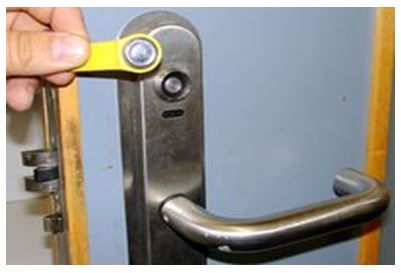
Lighting
Adequate outdoor lighting systems have great potential of enhancing the security of a facility. Intruders usually search for easy targets. These are mainly in dark places, which provide sufficient hideouts or offer entry without any detection. Floodlighting is among some security measures used in security management.
Electricians can simply install floodlights. However, facility owners must consider some fundamental factors before the installation of security lights.
First, in the case of floodlights, it is advisable to review coding conditions and zoning regulations. This is necessary to avoid cases of breaking the law. Such information is readily available from offices of the area municipality. Second, it is necessary to contact the Electricity Company before starting digging any holes. This is because of underground electric cables. They can assist in identifying and marking areas with electric cables. However, the facility owner can perform the necessary wiring with the help of a technician if necessary. Third, it is important to pick light fixtures recommended for outdoor use only. It is also necessary to recognize the manufacturer’s seal of approval for outdoor use. This is because indoor light fixtures can be risky to the facility if used outside. Fourth, it is necessary to install a ground fault interrupter for safety purposes. This is useful in cases where the hot wire has been damaged. The ground fault interrupter stops the current and lessens cases of electric shock. During the installation process, it is advisable to disconnect the power source before any work begins. To save on the cost of electricity, it is advisable to install lighting with a motion sensor. This keeps the cost of energy low and ensures the security of the facility. The light goes on if it senses a motion in the area. The light, which goes on suddenly alerts people about the presence of an intruder in the facility. Thus, the facility owner can apply various ways to deter entry, such as the call for support or notify police. Motion sensor lighting requires a motion light kit.
At the same time, the facility owner should also install an alarm system to provide a 24-hour monitoring system. The alarm automatically alerts people whenever it goes off. Thus, it allows for a quick response in case of an entry into the facility. It is necessary to get security management systems from trusted companies like ADT.
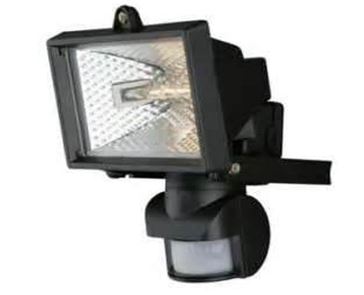
Intrusion Detection Systems
These are alarm systems in the security management system. The alarm facilitates responses from authorities whenever there is unauthorized entry into the facility. This category of security system consists of “motion, glass break detectors, and contact sensors” (Deutsch, 2012). It is important to have an alarm system verified because of many false alarms. The US has policies to reduce responses to false alarms.
The main aim of an intrusion detection system is to protect approach areas. In this sense, we assume that other systems of security management such as barriers and access control also serve their purposes of deterring and detecting intruders (Alexander, 1990). Alexander shows that such systems can provide security for both indoors and outdoors. These systems of detection also have abilities to protect large areas depending on their installation systems.
Intrusion detection systems can solve several security issues. First, the system can detect unauthorized entries using access points like doors. Intruders have several ways of breaking and opening locks including the use of keys. However, the detection sensor has the capability of detecting any form of access regardless of the method used. It then sends the message to the control panel. Second, the system also protects glass windows. Most intruders break glass windows to gain access into a facility. Glass break detectors have the ability to capture any sound of breaking glasses and sending the message to the alarm (Deutsch, 2012). This system deters the intruder from gaining access to the facility. These glass break detectors are readily available from security system outlets. They can serve various types of glasses such as:
- Coated
- Tempered
- Wired
- Plate
- Laminated
Third, detection systems can detect unauthorized entry using roofs and walls. Intruders may cut through walls and roofs to gain access to a facility. Motion detectors have abilities to detect any movements in protected areas of a building. The system then sends “the message to the central monitoring station” (Deutsch, 2012). Any slightest detection in movement usually activates the alarm.
Finally, intruders may gain access to the facility during normal operation or business hours. In such cases, staff should not use phones to respond to the intrusion. Instead, there are panic buttons, which allow staff to call for help in a discrete and undetected manner. These buttons are usually under desks and counters. Locations of panic buttons allow employees to have the ease of using them instantly. A facility can have many panic buttons for specific reasons and purposes.
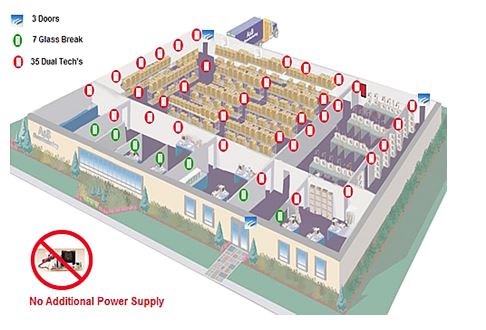
CCTV
CCTVs have become mandatory for facilities and homes. These gadgets vary in terms of size and shape. There are also waterproof CCTVs for external use as well as small ones suitable for indoor monitoring. CCTVs have capabilities to produce high-quality pictures in high-definition color or as black and white. Currently, there are CCTVs with night vision capabilities.
The costs of CCTVs have dropped with developments in technology. Some people have creatively turned computer video cam into surveillance systems within homes or offices. However, CCTVs require adequate planning before installation.
First, the costs of CCTVs vary based on their manufactures, color resolution, size, and place of use i.e., indoor or outdoor. Thus, it is vital to consider the budget so that expenses remain within the limit. Apart from the cost of CCTV, there are also other costs related to installation and gadgets for installation. It is advisable to install a cheap and reliable system with complete installations.
Second, the types of systems for installations also influence the decision-making process over CCTV. For instance, there are both wireless and wired systems. At the same time, it is necessary to consider color, black and white, or night vision system. Some surveillance systems run on computer systems while others use VCR systems. Most facilities rely on wireless systems in order to conceal the system and provide ease of connectivity. Color consideration is also important for clear resolution. It is also necessary to consider CCTVs with dual capacity for both day and night vision. However, these cameras have high costs than others.
The process of buying CCTV should involve a thorough consultation from experts. This may entail searching for information from both online sources and bricks and mortar stores. It is also important to incorporate computer systems to capture videos or images. This is because computer systems can cope with many types of cameras.
CCTVs should also have motion detection systems. In this manner, they can record video footage in case they detect any motion. This saves a lot of computer memory space. The system should also have the capability of loading video footage on the Web site. In turn, the system will call or send an e-mail to warn of detected intrusion. Once the video footage is on the Internet, the owner can gain access to them anywhere in the world by logging and seeing live images.
Third, gadgets needed for installation are the ones discussed above. However, their costs and sophistication may be sources of hindrances to many. It is advisable to consult with security experts.
Fourth, sites for installation of all security systems are critical for their safety too. This requires priory planning. Externally, it is necessary to cover all points of entry into the facility. The CCTV should be high up and far from any physical contact with people. It is advisable to conceal them if possible. Any cable from the camera must not be visible. Internally, the facility should have wireless spy CCTVs. They should be high up and concealed from people. Every room and entry point should have CCTV. However, in case of budget limitations, CCTVs can be in areas that need constant surveillance.
Finally, computer or VCR recorders should be in protected areas. It is important to complement CCTVs with other systems of security like lights and alarms.
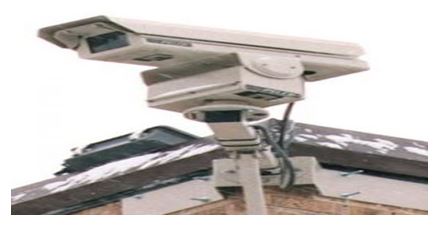
Patrols
Security patrols provide reliable forms of security due to constant patrols. They can act on any form of alarm to prevent and deter crimes. They must enforce the laws of the facility. Consequently, they protect the facility from theft, damages, lives, and risks that may take place. Modern security officers are professionals who have acquired skills in specialized duties like controlling access, arresting, operating the machine during an emergency, reporting daily security activities, and performing first aid.
Security officers deter intruders. However, arming and officer increases his deterrent effect. The presence of armed patrol guards outside a facility is enough to deter most intruders. Armed guards have better ways of protecting the facility. However, the presence of armed guards can attract dangerous and armed intruders who may engage in fire exchange.
The cost of armed guards may be high for most facilities. It has both security contract fees as well as insurance costs. However, it is the best method to ensure the maximum security of a facility.
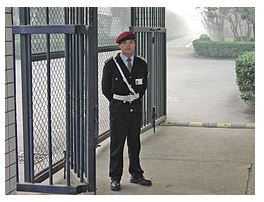
Conclusion
Most security practices involve detecting, deterring, observing, and reporting. There are several ways of upgrading the security system of a facility. However, most of these measures overlap. Still, it is advisable to implement all three levels of the facility security system. These systems complement one another.
Modern security systems can sense, decide, and act on the security breach. Security experts can provide their help when choosing the best security measures for a facility. This is because security items have diverse characteristics, functions, costs, and originate from various manufacturers.
These systems need constant monitoring and testing after installation in order to ensure that they continue to offer reliable protection for the facility.
References
Alexander, P. (1990). External intrusion detection systems for critical facilities. Carnahan: IEEE International.
Deutsch, W. (2012). Understanding Your Security System. Web.
Sourcefire. (2012). The Case for the Next-Generation IPS. Web.